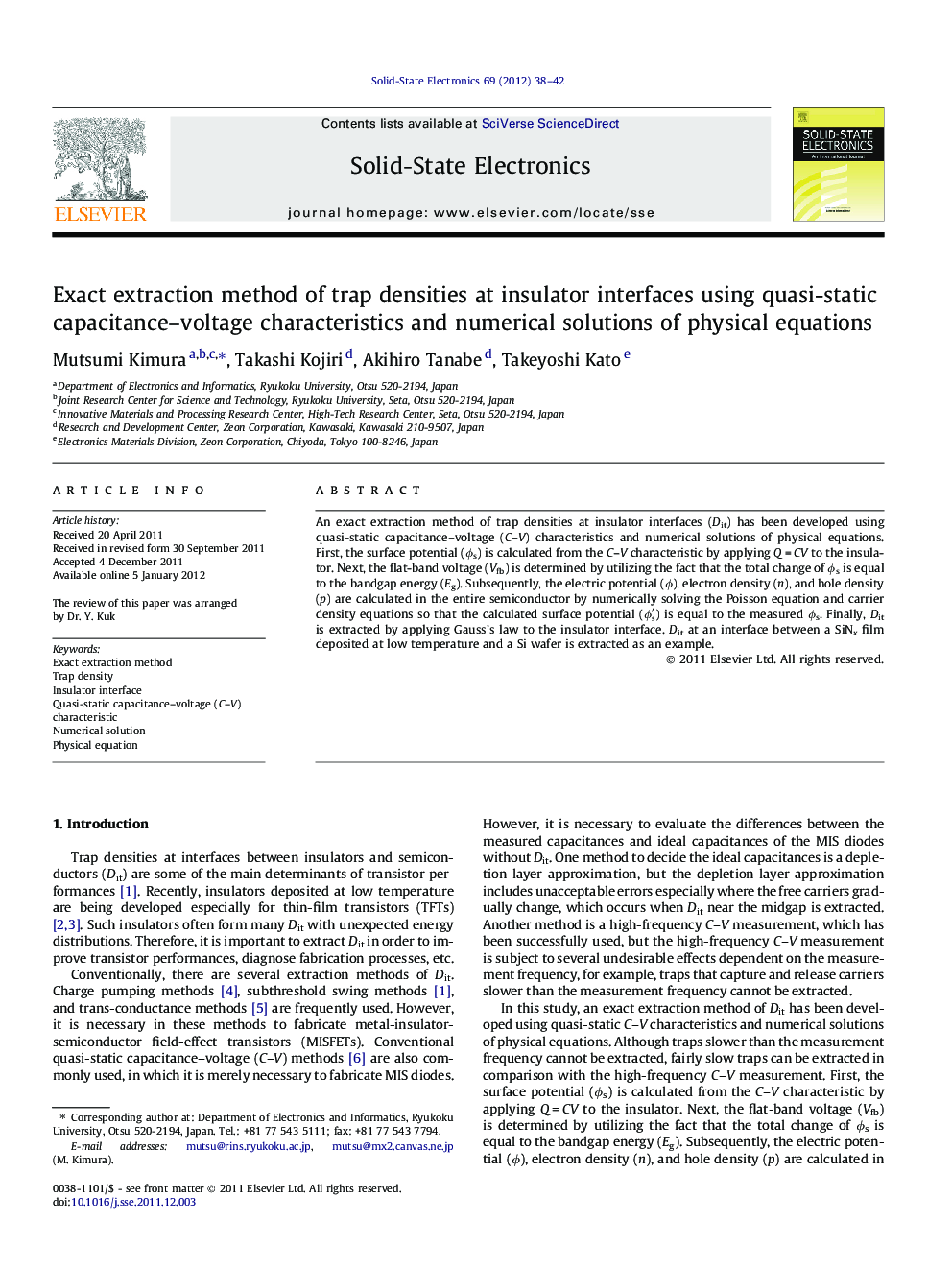| Article ID | Journal | Published Year | Pages | File Type |
|---|---|---|---|---|
| 748764 | Solid-State Electronics | 2012 | 5 Pages |
An exact extraction method of trap densities at insulator interfaces (Dit) has been developed using quasi-static capacitance–voltage (C–V) characteristics and numerical solutions of physical equations. First, the surface potential (ϕs) is calculated from the C–V characteristic by applying Q = CV to the insulator. Next, the flat-band voltage (Vfb) is determined by utilizing the fact that the total change of ϕs is equal to the bandgap energy (Eg). Subsequently, the electric potential (ϕ), electron density (n), and hole density (p ) are calculated in the entire semiconductor by numerically solving the Poisson equation and carrier density equations so that the calculated surface potential (ϕs′) is equal to the measured ϕs. Finally, Dit is extracted by applying Gauss’s law to the insulator interface. Dit at an interface between a SiNx film deposited at low temperature and a Si wafer is extracted as an example.
Graphical abstractFigure optionsDownload full-size imageDownload as PowerPoint slideHighlights► An exact extraction method of trap densities at insulator interfaces (Dit) has been developed. ► Quasi-static capacitance–voltage (C–V) characteristics and numerical solutions of physical equations are used. ► Dit at an interface between a SiNx film deposited at low temperature and a Si wafer is extracted as an example.
